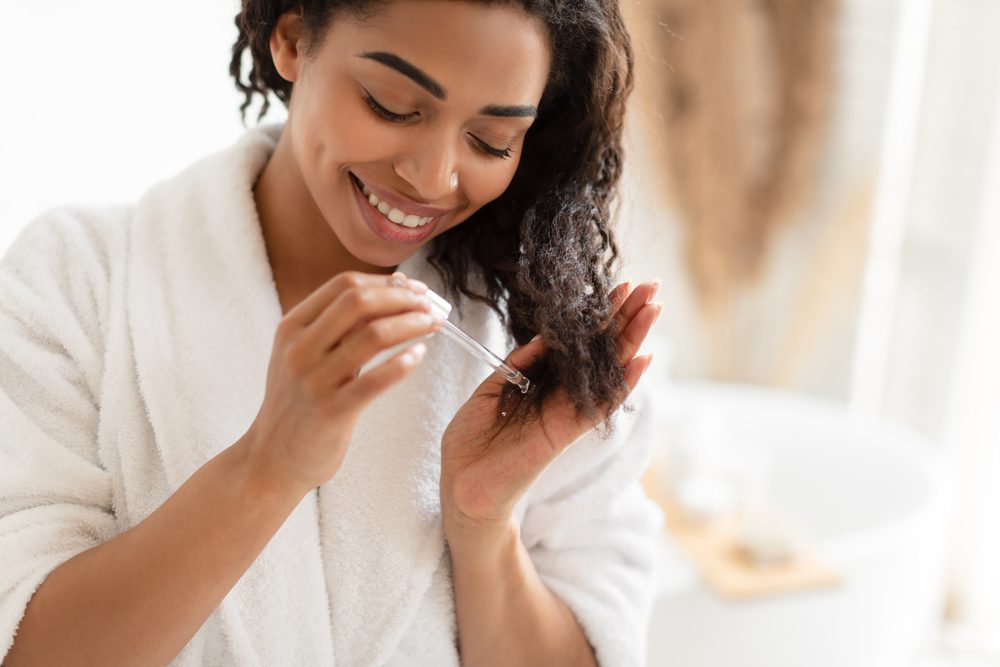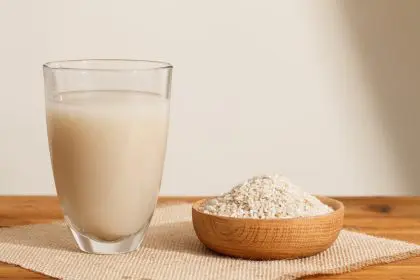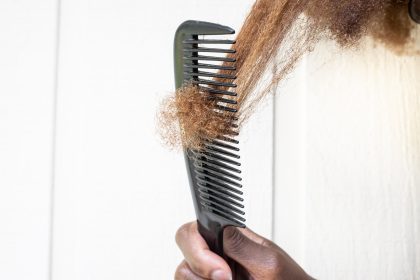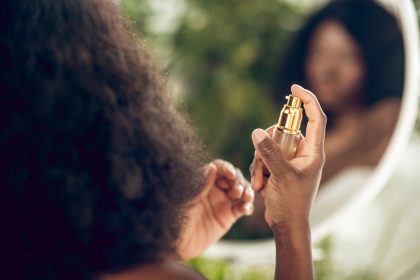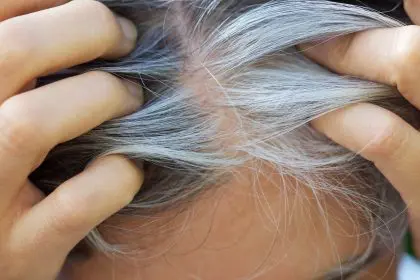Hair loss and thinning affect millions of people worldwide, prompting many to seek natural solutions before turning to commercial products or medical interventions. While no remedy promises overnight results, certain plant-based ingredients have demonstrated genuine efficacy in scientific studies. These four homemade serums harness the power of these proven components, offering affordable alternatives that support hair growth through multiple mechanisms.
1. Rosemary and peppermint stimulating serum
The foundation of this powerful serum combines two plant extracts scientifically demonstrated to promote circulation to hair follicles while inhibiting processes that lead to hair loss.
Rosemary contains rosmarinic acid and carnosic acid, compounds that improve blood circulation to the scalp, effectively delivering nutrients to hair follicles. Research has found rosemary oil performs comparably to minoxidil (the active ingredient in Rogaine) for certain types of hair loss, without the scalp irritation many experience with commercial products.
Peppermint oil contains menthol, which creates a vasodilating effect—expanding blood vessels near the skin surface—that significantly increases blood flow to the scalp. This increased circulation delivers more oxygen and nutrients to hair follicles while removing waste products that may impede growth.
To create this serum:
2 tablespoons jojoba oil (closely mimics natural scalp sebum) 10 drops rosemary essential oil 5 drops peppermint essential oil 1 teaspoon vitamin E oil (preservative and antioxidant)
Combine all ingredients in a dark glass bottle with a dropper top, shaking well to blend. Apply 1-2 dropperfuls directly to the scalp in problem areas, massaging gently with fingertips to enhance absorption. For maximum effectiveness, apply at night and leave on overnight before washing out in the morning.
For sensitive scalps, perform a patch test first and consider reducing the essential oil concentration. This serum typically produces a pleasant tingling sensation upon application—a sign the circulation-boosting properties are active—but burning or intense discomfort indicates the need for dilution.
This serum works best when used consistently three times weekly for at least three months, as hair growth cycles require time to respond to treatment. Users typically report reduced shedding within the first month, with new growth becoming visible around the three-month mark.
2. Aloe vera and fenugreek growth formula
This serum combines the regenerative properties of aloe vera with the hormone-balancing effects of fenugreek to address multiple factors affecting hair growth simultaneously.
Aloe vera contains proteolytic enzymes that repair dead skin cells on the scalp, creating a healthier environment for hair growth. Its rich composition of vitamins A, C, and E nourishes hair follicles, while its high water content delivers intense hydration that reduces breakage and promotes length retention.
Fenugreek seeds contain compounds that mimic dihydrotestosterone (DHT) blockers—molecules that prevent the hormone conversion process implicated in pattern baldness for both men and women. Additionally, fenugreek provides proteins and nicotinic acid that stimulate hair follicles and strengthen the hair shaft from root to tip.
To prepare this serum:
2 tablespoons fresh aloe vera gel (scraped directly from a plant leaf if possible) 1 tablespoon fenugreek seed powder 3 tablespoons distilled water 1 tablespoon castor oil (contains ricinoleic acid that increases circulation)
Soak the fenugreek powder in distilled water overnight. In the morning, blend this mixture with fresh aloe vera gel and castor oil until smooth. Strain through cheesecloth to remove any particles that might clog hair follicles.
Apply this serum to a clean, slightly damp scalp, focusing on areas of thinning. The slightly sticky consistency works best when left on for at least two hours before washing, though overnight application produces optimal results. Store remaining serum in the refrigerator and use within one week, as this natural formula lacks commercial preservatives.
This serum addresses multiple causes of hair loss: it unclogs follicles, balances hormonal factors, provides nutrients, and strengthens existing hair to prevent breakage. Results typically begin appearing after consistent twice-weekly application for 8-12 weeks.
3. Onion and ginger anti-inflammation elixir
While the aroma presents challenges, this powerhouse combination specifically targets inflammation—an often-overlooked factor in hair loss conditions from alopecia areata to general thinning.
Onion juice contains sulfur compounds that reduce inflammation and fight fungal infections that may impede healthy hair growth. These sulfur compounds also boost collagen production necessary for hair growth and strengthen the hair shaft itself, preventing premature breakage.
Ginger contains gingerols and shogaols that increase circulation to the scalp while reducing inflammatory cytokines (cell signaling molecules that trigger inflammation). This combination effectively soothes irritated scalps and creates an optimal environment for follicle function.
To create this anti-inflammatory elixir:
3 tablespoons fresh onion juice (from a grated and strained onion) 1 tablespoon fresh ginger juice (from grated and strained ginger root) 1 tablespoon honey (natural humectant and antimicrobial) 2 tablespoons aloe vera gel (anti-inflammatory and moisturizing)
Combine all ingredients in a small bowl, stirring thoroughly to incorporate. Apply directly to the scalp using a cotton ball or clean fingers, massaging gently to ensure even distribution. Allow the mixture to remain on the scalp for 30-45 minutes before washing with a gentle shampoo.
To minimize the lingering onion odor, rinse with a diluted apple cider vinegar solution (one part vinegar to four parts water) after shampooing. Despite the aromatic challenge, this serum provides powerful anti-inflammatory benefits that make it particularly effective for inflammatory hair loss conditions.
For optimal results, apply this serum once or twice weekly. Many users report significant reduction in scalp irritation within the first few applications, with visible improvements in hair density appearing after 8-12 weeks of consistent use.
4. Amino acid and oil nourishing blend
This deeply nourishing serum addresses nutritional deficiencies that often contribute to hair loss while providing necessary fatty acids that strengthen the hair shaft and prevent breakage—allowing new growth to achieve visible length.
Coconut oil penetrates the hair shaft better than other oils, reducing protein loss both in damaged and undamaged hair. Its lauric acid content has a particular affinity for hair proteins, helping maintain strength throughout the growth cycle.
Egg yolk provides a complete protein source rich in biotin, folate, vitamins A and D, and lecithin—nutrients directly involved in hair follicle cell division and growth. The phospholipids in egg yolk help moisturize both scalp and hair while strengthening the barrier function of the skin.
To prepare this nourishing blend:
1 egg yolk (room temperature) 2 tablespoons coconut oil (melted but not hot) 1 tablespoon argan oil (contains vitamin E and fatty acids) 5 drops lavender essential oil (improves circulation and adds fragrance)
Whisk the egg yolk in a small bowl until smooth. Slowly add the melted coconut oil while continuing to whisk, then incorporate the argan oil and lavender essential oil. The resulting emulsion should have a smooth, creamy consistency.
Apply this nourishing treatment to both scalp and hair lengths, using fingers to ensure thorough coverage. Cover with a shower cap or wrap in a warm towel to enhance penetration. Allow the treatment to remain for 30-60 minutes before washing with cool water and a gentle shampoo (hot water may cook the egg proteins).
This treatment addresses both new growth and length retention, making it ideal for those struggling with both thinning and breakage. The complete protein and fatty acid profile supports the entire hair growth cycle while strengthening existing strands to prevent breakage.
For maximum benefit, apply this treatment weekly. Users typically report softer, stronger hair immediately after the first treatment, with improved growth patterns becoming visible after 2-3 months of consistent application.
The science behind hair growth points to several critical factors these serums address: circulation to follicles, nutritional delivery, hormonal balance, inflammation reduction, and strand integrity. While commercial products often target just one or two of these factors, these homemade serums provide comprehensive support for the entire hair growth cycle.
For individuals experiencing moderate hair thinning or slow growth, these natural formulations often provide sufficient improvement without the side effects associated with pharmaceutical options. However, those with severe or sudden hair loss should consult medical professionals, as these symptoms may indicate underlying health conditions requiring specific treatment.
For optimal results with any hair growth remedy, consistency proves more important than formula potency. Even the most effective ingredients require regular application over multiple hair growth cycles to produce visible results. Creating a treatment calendar and documenting progress with monthly photos helps maintain the consistency necessary for success.
Finally, these topical treatments work best when complemented by internal nutrition supporting hair growth—adequate protein, biotin, iron, zinc, and vitamins D and C. The combination of internal nutrition and external treatment provides comprehensive support for revitalized hair growth from root to tip.

